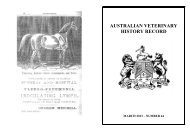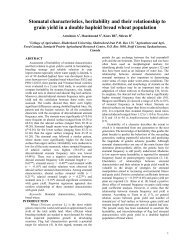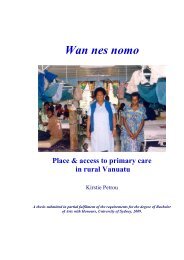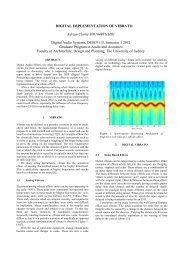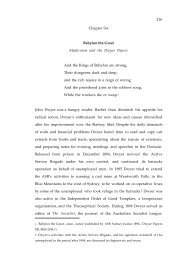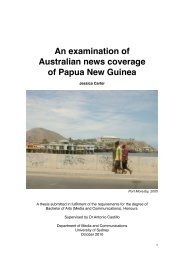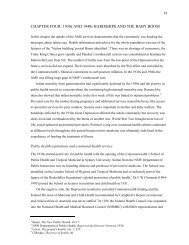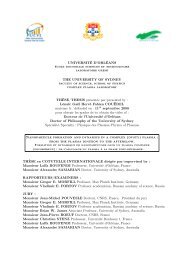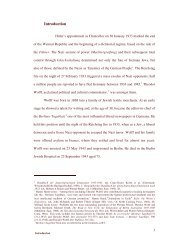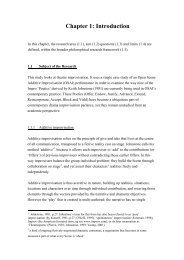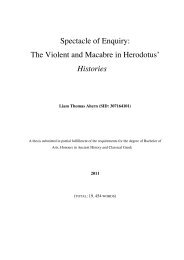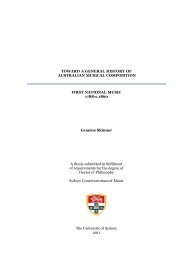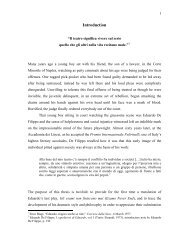Chapter 6: Tense, aspect and mood
Chapter 6: Tense, aspect and mood
Chapter 6: Tense, aspect and mood
Create successful ePaper yourself
Turn your PDF publications into a flip-book with our unique Google optimized e-Paper software.
-mvrra suffix. Possible historical sources for this suffix are suggested in section 6.7.2. Section 6.8<br />
finishes this chapter with a summary.<br />
6.2 The tense, <strong>aspect</strong> <strong>and</strong> <strong>mood</strong> system<br />
Table 6.1 presents the possible combinations of verbal inflectional categories in Enindhilyakwa,<br />
where <strong>mood</strong> is represented by prefixes <strong>and</strong> tense <strong>and</strong> <strong>aspect</strong> by suffixes. Unlike most<br />
Gunwinyguan languages (Alpher, Evans & Harvey 2003), but in common with Wubuy (Heath<br />
1984), tense <strong>and</strong> <strong>aspect</strong> are not confined to the realis <strong>mood</strong>, but appear in all four positive <strong>mood</strong>s,<br />
with some neutralisations. Negative contexts involve the negative particle nara. In the negated<br />
non-past the pronominal prefixes are replaced by a- or ng-, <strong>and</strong> this category takes a distinct NP3<br />
suffix. The numbers ‘1’ <strong>and</strong> ‘2’ designate atomic <strong>and</strong> neutral <strong>aspect</strong>, respectively.<br />
Positive<br />
Neg.<br />
Past Non-past<br />
Realis<br />
Past1 Irrealis<br />
Realis<br />
Past2<br />
Past2<br />
nara<br />
Irrealis<br />
Past2<br />
Realis<br />
Npast1<br />
Realis<br />
Npast2<br />
Irrealis<br />
Npast1<br />
Irrealis<br />
Npast2<br />
Table 6.1: Enindhilyakwa tense, <strong>aspect</strong> <strong>and</strong> <strong>mood</strong> inflectional categories<br />
Imperative<br />
Npast1<br />
Imperative<br />
Npast2<br />
nara<br />
a- / ng-<br />
Npast3<br />
Hortative<br />
Npast1<br />
Hortative<br />
Npast2<br />
Thus, the various TAM categories are expressed formally by complex combinations of (i)<br />
inflectional suffixes (see paradigms in the next section); (ii) choice of four series of pronominal<br />
prefixes expressing <strong>mood</strong> (see paradigms in <strong>Chapter</strong> 4); <strong>and</strong> (iii) presence or absence of the<br />
Negative element nara, which always precedes the verb.<br />
The following examples illustrate some of the TAM combinations in Table 6.1. Realis <strong>mood</strong> is<br />
unmarked in the glosses, while Irrealis, Imperative <strong>and</strong> Hortative are glossed IRR, IMP <strong>and</strong> HORT,<br />
respectively.<br />
(5) a. Realis + P1 <strong>and</strong> P2:<br />
Nvng-engkvrrvka arakba nuw-akadha-ngv-ma amarda.<br />
1-hear.P1 compl.act NEUT-make.own.sound-P2-ma NEUT.grass<br />
‘I heard the grass crackling.’ (‘Bujikeda’ y16)<br />
b. Irrealis + NP2 <strong>and</strong> NP1<br />
biya kvnu-wardu-wardemi-na n-akina, nganja k-engkvrrvki-ya kemba=dha<br />
<strong>and</strong> IRR.3m-RDP-cry.out-NP2 3m-that 1.PRO.CofR IRR.1-hear-NP1 then=TRM<br />
‘he will keep on crying out, <strong>and</strong> then I will hear [him]’ (‘Yabungurra’ l8-9)<br />
200



